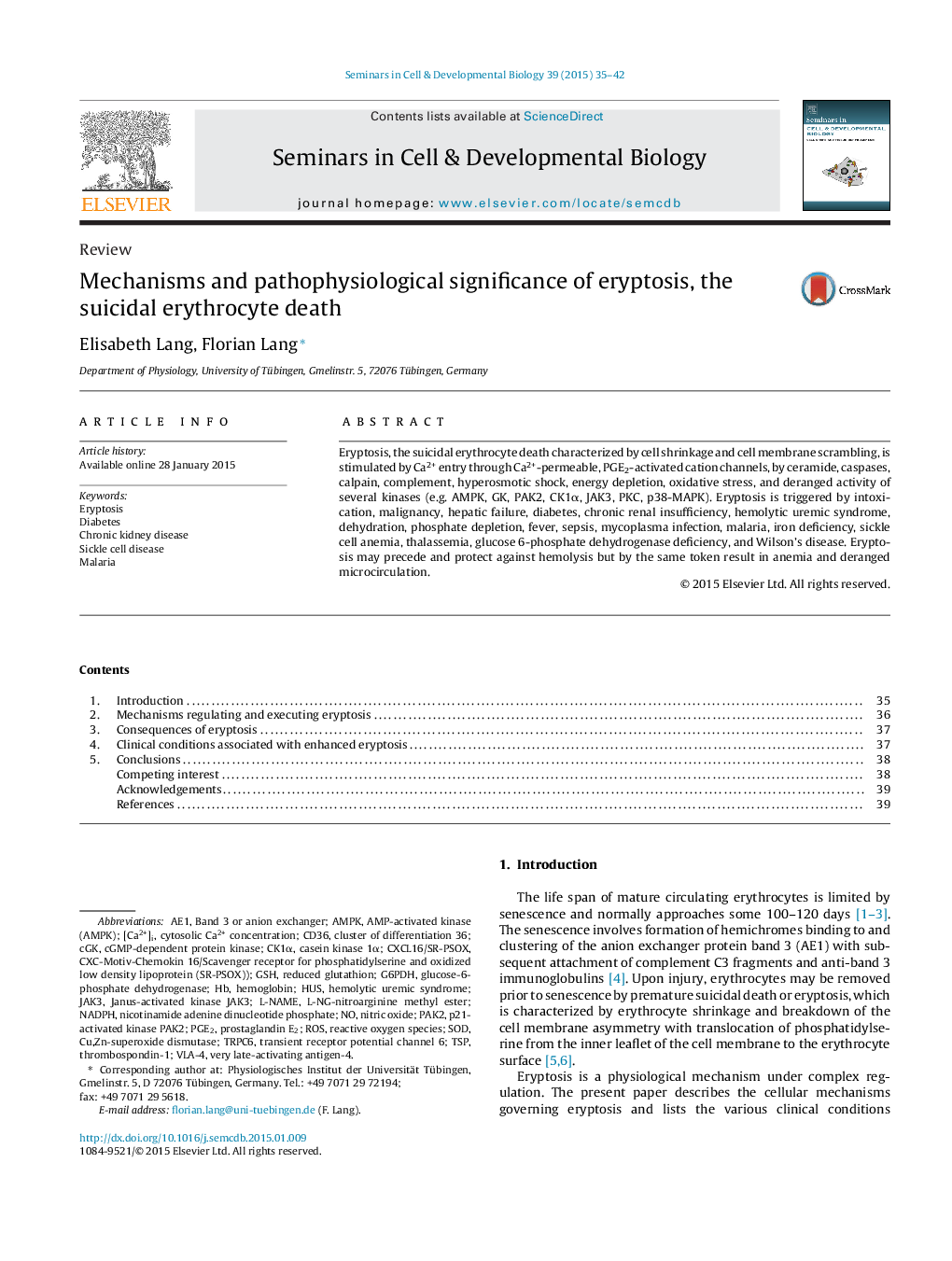| Article ID | Journal | Published Year | Pages | File Type |
|---|---|---|---|---|
| 2202578 | Seminars in Cell & Developmental Biology | 2015 | 8 Pages |
•Upon injury, circulating erythrocytes may enter suicidal cell death or eryptosis.•Most important triggers of eryptosis include enhanced cytosolic Ca2+ activity and ceramide.•Regulation of eryptosis involves AMPK, GK, PAK2, CK1α, JAK3, PKC, p38-MAPK.•Diseases with enhanced eryptosis include genetic disorders, sepsis, malaria, renal failure and hyperbilirubinemia.•Excessive eryptosis may lead to anemia and impaired microcirculation.
Eryptosis, the suicidal erythrocyte death characterized by cell shrinkage and cell membrane scrambling, is stimulated by Ca2+ entry through Ca2+-permeable, PGE2-activated cation channels, by ceramide, caspases, calpain, complement, hyperosmotic shock, energy depletion, oxidative stress, and deranged activity of several kinases (e.g. AMPK, GK, PAK2, CK1α, JAK3, PKC, p38-MAPK). Eryptosis is triggered by intoxication, malignancy, hepatic failure, diabetes, chronic renal insufficiency, hemolytic uremic syndrome, dehydration, phosphate depletion, fever, sepsis, mycoplasma infection, malaria, iron deficiency, sickle cell anemia, thalassemia, glucose 6-phosphate dehydrogenase deficiency, and Wilson's disease. Eryptosis may precede and protect against hemolysis but by the same token result in anemia and deranged microcirculation.
